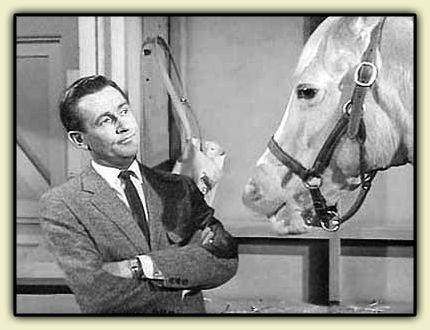 As concerns about the federal budget deficit heighten, and the
year’s end draws ever nearer, increasing talk has been of the looming fiscal
cliff.
As concerns about the federal budget deficit heighten, and the
year’s end draws ever nearer, increasing talk has been of the looming fiscal
cliff.
Unless Congress can agree on a solution by the end of the year, $600 million in tax hikes and automatic spending cuts will be enacted, and likely push the country back into recession.
One particularly bitter struggle has been whether or not to
expire the Bush Era Tax Cuts, which would restore top marginal income taxes to 39.6%.
To preface, as someone who pays virtually no income taxes (a
real rate of about 2%), on a personal moral level, it is difficult to cast
stones at those who object to seeing their marginal tax rates
increase if the Bush era tax cuts expire.
At this point, I should also clarify a point for the reader. I recognize that these tax rates I am
comparing are not the same things. As
most of you probably know, a marginal tax means that different tax rates are
applied to successively higher levels of income, not overall income. Currently,
for someone who makes $500,000 dollars a year, the rate would not be 35% over
the entire amount. Rather, this highest tax rate is only be applied on the
amount over $379,149, or approximately $120,851.
So, like poor graduate students, the wealthy pay overall
lower income taxes than their highest marginal rates, hence the term marginal.
Still, giving 39.6% of any part of one’s income seems
offensive to many who have, presumably, worked hard to get their money.
But, for these budding Ayn Rand disciples, a little
perspective is in order.
Historically, the marginal tax rate on upper incomes in the
United States has been much higher than it is today. The Eisenhower
administration saw rates as high as 91% on the highest wage earners. In fact, it is interesting to note that taxes
for the highest income bracket did not dip below 70% until 1982.
That being said, it stands to reason that the ones
who suggest raising taxes on the rich are not rich themselves
Or are they?
Warren Buffett, the well know billionaire investor and
heralded “Oracle of Omaha” made headlines last year when he reported that he
paid an effective tax rate of 11%. This is because most of his income comes from investments, that are taxed a much lower rate.
He surprised a lot of people when he said that he thought
the rich, like him, should be paying more.
President Obama, emboldened by this endorsement has
suggested a Buffett Rule, which will raise taxes to 30% on all income over $ 2 million dollars.
Like efforts to expire Bush Era tax cuts, his plan has met some opposition.
The reluctance of Republican lawmakers, and some Democrats
to raise taxes on the wealthy is based on a belief that increasing taxes on the
rich will diminish disposable income for investment, which is needed for
growth.
Without growth it is feared we will plummet back into economic
recession. This is the argument of
supply side economics, which sees investment, rather than demand, as the
primary driver of economic growth.
This theory suggests that increased investment will fuel
economic output, creating jobs that will benefit the middle and lower classes.
This is a compelling theory, and one that has seen much
support from Ronald Reagan and other conservatives over the years.
The rich are definitely getting richer. In the last
thirty years, the wealthiest 1 percent has doubled its share of national
income, from 10% of the nation’s income to 20%. The top tenth of one percent
has tripled its share, and the richest 400 Americans own more than the bottom
150 million put together.
For this same time period, however, median wages have failed
to keep pace with such wealth gains, increasing only 11%.
Part of the problem with this theory is that tax cuts don’t always
equal investment, because saving, or leakages don't equal injections. Also, though
profits and productivity at many companies are soaring, gains in growth do not necessarily
translate to higher wages or increased jobs.
It's worth noting that before supply side economics was coined “trickle down”
economics, it had a different name.
Coined in 1896, it was called “Horse and Sparrow Theory.”
If you feed a horse enough oats, some of it will “pass
through” to the road, giving food for the sparrows.
An apt and demonstrative analogy for much of the
“trickle-down” rhetoric of the past thirty years,
and I will leave my commentary at that.
and I will leave my commentary at that.
John,
ReplyDeleteAbsolutely brilliant (especially the horse and sparrow analogy). I spent some time this week looking at Sweden and how it seems to be weather the Euro Zone crisis a bit better than others and some of the policies suggest a supply side emphasis on government interventions. I am not sure that we can ever get back to a tax rate for the wealthy of 91% but it does make me wonder why trickle down economics is so palatable. Maybe this is what Norm is getting at when he said our economic activist is asleep (paraphrased).
John, thanks for the historic references - very interesting to hear about how the perspectives and realities on this issue has changed (or stayed the same) over time. I thought it was especially interesting when Norm said that it is actually more effective when the middle class are taxed more because that money is actually more likely to be circulated back into the economy at a much faster rate. This seems like a sad truth. I don't know what the answer is to a debate that never seems to land on a peaceful compromise, no matter how far back in history you travel.
ReplyDelete